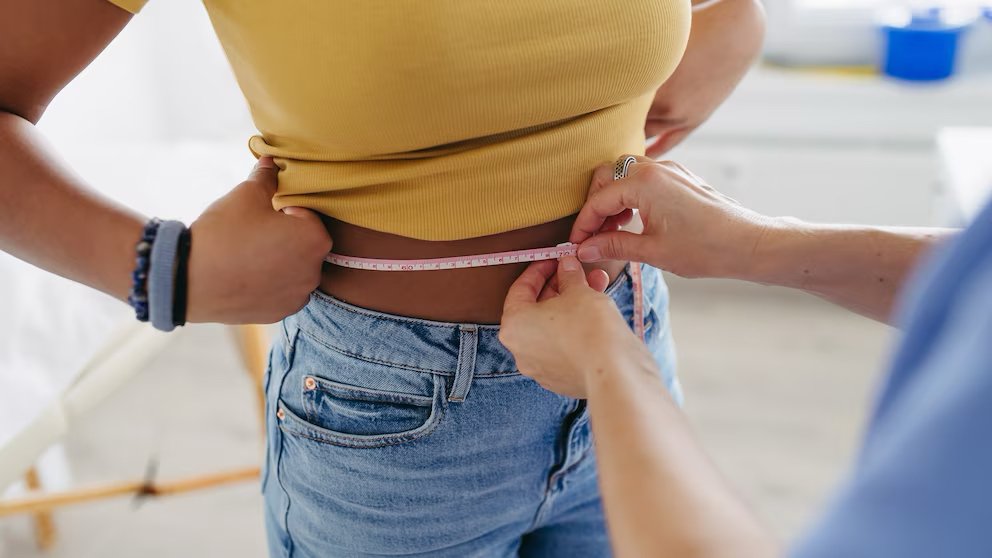As concerns over obesity and related health conditions continue to grow, healthcare professionals are seeking more accurate ways to assess body fat and the risks it poses. One such innovation is the Body Roundness Index (BRI), a relatively new metric designed to measure body fat distribution and estimate potential health risks. In this article, we’ll explore what the Body Roundness Index is, how it compares to traditional measures like Body Mass Index (BMI), and why it’s gaining recognition as a better predictor of obesity-related diseases.
What is the Body Roundness Index (BRI)?
The Body Roundness Index is a tool that calculates a person’s body fat distribution based on their height and waist circumference. Unlike BMI, which only considers weight and height, BRI is designed to provide a more nuanced understanding of a person’s body shape and fat distribution. This is important because the location of fat in the body—especially around the abdomen—can significantly influence the risk of developing metabolic and cardiovascular diseases.
BRI ranges from 0 to 1, with higher values indicating a rounder, more apple-shaped body, which is typically associated with higher levels of visceral fat. Visceral fat, found deep within the abdomen, is closely linked to health problems such as heart disease, type 2 diabetes, and certain cancers.
How BRI Differs from BMI
The Body Mass Index (BMI) has long been the standard for measuring whether a person’s weight is healthy for their height. However, BMI has significant limitations. For instance, it does not account for muscle mass, meaning that a highly muscular person might be classified as overweight or obese by BMI, even if they have low body fat. Similarly, BMI cannot differentiate between different fat distributions—an individual with a higher percentage of abdominal fat may have the same BMI as someone with a healthier distribution of body fat.
The Body Roundness Index offers several key advantages over BMI:
1. Focus on Fat Distribution: BRI emphasizes waist circumference, which better captures the distribution of fat around the abdomen—a key predictor of health risks.
2. Better Health Risk Prediction: Studies have shown that BRI is more accurate than BMI at predicting obesity-related conditions like diabetes and heart disease, particularly because it focuses on the risks associated with abdominal fat.
3. Greater Customization: Since BRI incorporates more than just weight, it can provide a more individualized assessment of body shape and fat distribution, making it more useful for healthcare providers monitoring patients’ health over time.
The Science Behind the Body Roundness Index
BRI was developed through advanced mathematical modeling, designed to predict body fat percentage from body shape measurements. Researchers studied a large pool of data to create an equation that correlates height and waist circumference with overall body fat distribution. The result is a single value (the BRI score) that estimates how much of a person’s body mass is made up of fat and how that fat is distributed.
The higher the BRI score, the more rounded the person’s body shape is, and the greater the likelihood that they carry fat in the abdominal area. Since abdominal fat is linked to serious health problems like hypertension, stroke, and insulin resistance, a higher BRI score indicates an elevated health risk.
Why the Body Roundness Index is Important
BRI’s emphasis on fat distribution, rather than total body weight, offers a clearer picture of a person’s risk for health conditions linked to obesity. Some of the key benefits of using BRI include:
• Better Cardiovascular Risk Assessment: Research has shown that a high BRI correlates strongly with cardiovascular risks, including high blood pressure and elevated cholesterol levels.
• Improved Metabolic Health Monitoring: BRI is also linked to the risk of developing type 2 diabetes, particularly in individuals with excess visceral fat, which disrupts insulin regulation.
• More Accurate in Diverse Populations: Since BMI does not account for differences in body composition between men, women, and different ethnic groups, BRI provides a more accurate assessment of health risks across diverse populations.
How to Calculate Your Body Roundness Index
To calculate your Body Roundness Index, you need two measurements:
1. Height: Measure your height in meters.
2. Waist Circumference: Measure the circumference of your waist at its narrowest point, usually just above the belly button, in centimeters.
Once you have these measurements, the BRI formula can be used to calculate your score, but most people rely on online calculators that do the math for you. A higher BRI score indicates a rounder body shape and potentially higher health risks.
BRI as a Tool for Weight Management
The Body Roundness Index can be a valuable tool for tracking changes in body composition over time. For individuals trying to lose weight or improve their health, monitoring BRI can offer insight into whether fat is being lost from key areas like the abdomen. This can be especially useful for people whose BMI might not change significantly with fat loss due to muscle gain.
Conclusion: A Better Way to Understand Obesity and Health
The Body Roundness Index represents an evolution in how we measure body fat and assess health risks. By focusing on waist circumference and body shape, BRI offers a clearer picture of how fat is distributed in the body, which is a crucial factor in understanding the risks of obesity-related diseases. As researchers continue to explore more precise and individualized ways to monitor health, BRI stands out as a more reliable indicator of both current health and future risks.
Sources:
• National Institutes of Health (NIH)
• American Heart Association (AHA)
• PubMed





